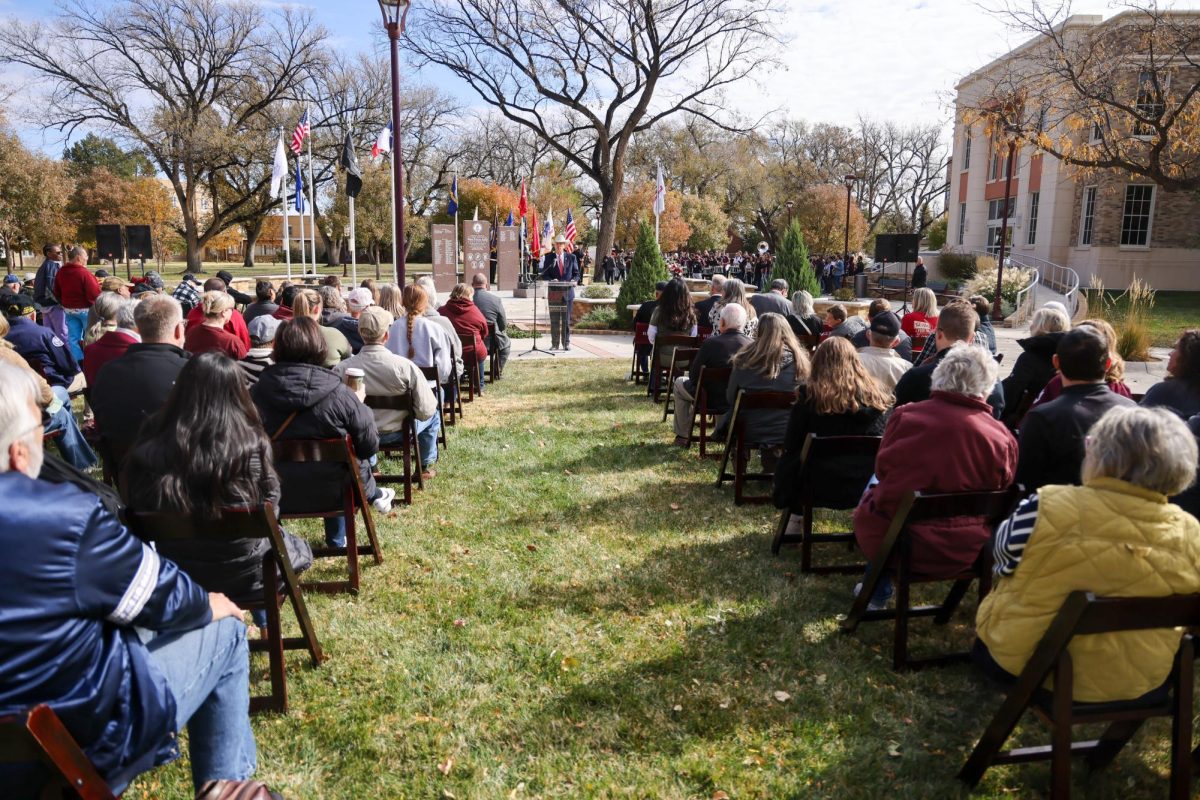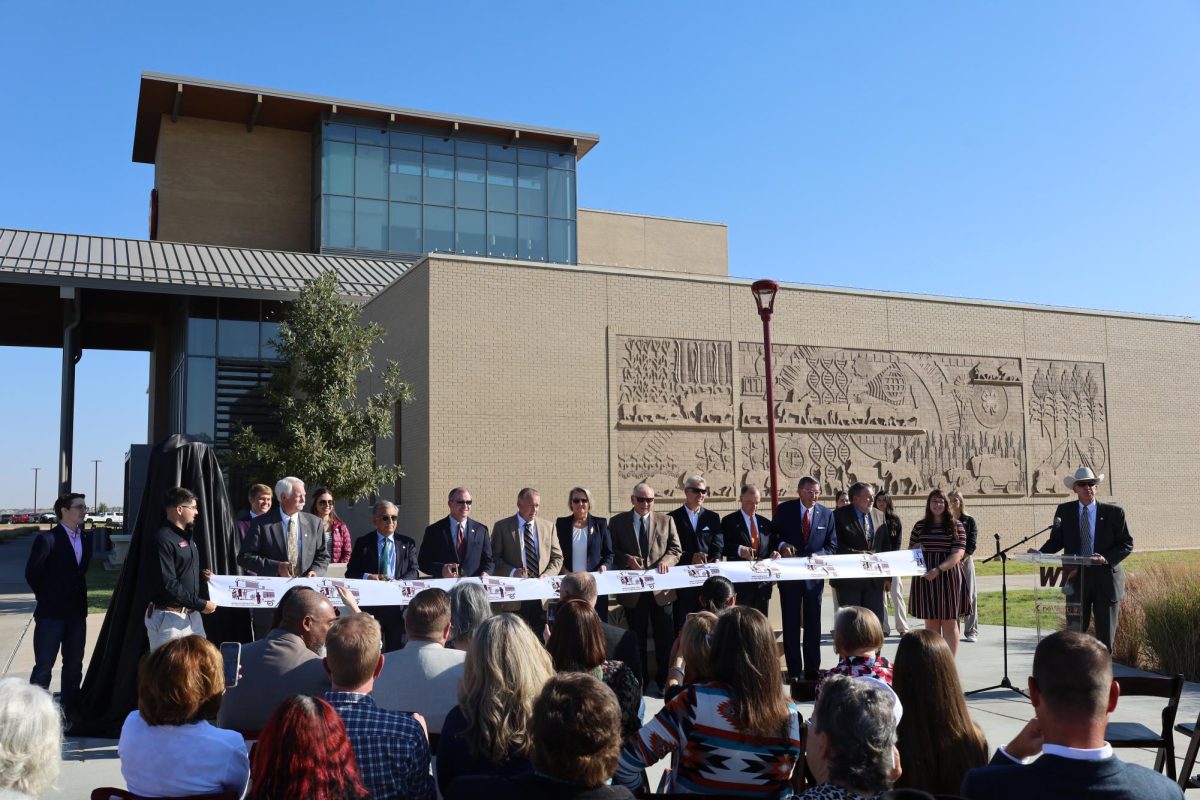Chuck Olson’s The Land: Spirituality, located in the Amarillo Art Museum, can be seen as a vivid delineation of the mesas and canyons of North Texas. Olson completed this piece in 2009, when the artist had a solo show at the Amarillo Museum of Art. Though not always on display, this piece is in the permanent collection of the museum and can be viewed upon appointment.
The painting uses bright acrylics and decorative maps to illuminate the emotive qualities of the regional landscape. The canvas is sectioned into two pieces: a small rectangular left piece and a large rectangular right piece. This cut does not disrupt the picture as a whole, as the two parts are placed close together. When I visited the museum, it was on display in an open area with natural and artificial light. During the day, it can be fully illuminated by the natural light.
The painting is about 2-3 feet off the ground and is very large, positioned high above one’s head and spans more than ten feet across. It stands alone; there are no paintings within its close vicinity. The acrylic paint the artist chose is very bright and textural. In some places he has watered it down to allow it to drip and in other places, he has globbed it on to create thick brushstrokes.At the bottom of the painting, there are antique maps pasted on. The paint has dripped onto these maps, blending them into the painting. The maps create a horizon line and foreground to the painting. I think that Olson chose maps to share the excitement of travel and the local topography. Olson was not a native of the area and would have had to travel to visit the region.
The vivid golds, oranges, and browns of the painting delineate the feeling of sunrise or sunset. The bright blue in the background signals the appearance of a sky. These colors are very expressive of an afternoon on the Southern Plains. Olson uses a lot of flowing, sweeping, and broad lines that which carry the eye around the work. The large, dark umber brush strokes start from the lower left and rise to traverse horizontally the top of the piece.
These marks are the darkest color and the thickest lines of the piece, so their effect is very dramatic. Though not life-size, the scale of the piece is large enough to draw the viewer into the piece. When standing a few feet from the painting, it dominates your entire view. This scale produces the feeling of being out on the vast open plains with that infinite expanse all around you; it made me feel small, but grounded.
The sky is the majority of the landscape with dark clouds that could signify either day or night. A mesa rises from a golden skyline behind the plains. The mesa is painted minimally with a brown outline and brown small brushstrokes delineating the top. In the foreground, there is a straight horizon with what looks like wind turbines in the middle; these forms are bright white and stand out. There is also what appears to be a power line, painted very thinly, crossing the work. Olson shows us a view alongside a road, where industry and technology—the road, turbines, and powerlines—blend in with the natural landscape.














